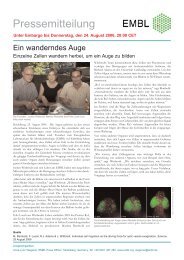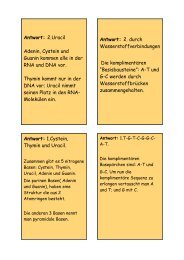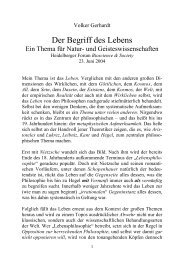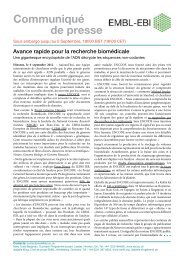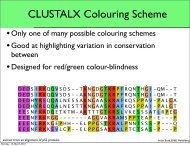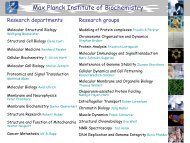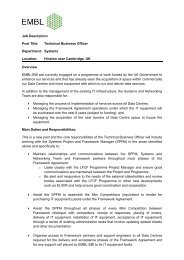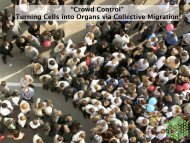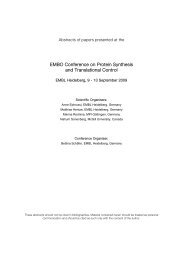Media Clips - EMBL
Media Clips - EMBL
Media Clips - EMBL
Create successful ePaper yourself
Turn your PDF publications into a flip-book with our unique Google optimized e-Paper software.
Scientific American: The 1 Percent Genome Solution<br />
multiple ways that are described, along with the results, in a Nature<br />
paper published online today and in a special issue of Genome<br />
Research.<br />
A major part of the project was identifying sequences that cells copy,<br />
or transcribe, into RNA molecules. Cells make proteins from RNA they<br />
copy from genes, but some RNAs play roles by themselves. In<br />
addition, some studies have found evidence that species from flies<br />
and worms to humans copy large amounts of RNA from noncoding<br />
DNA, with no apparent purpose. Nevertheless, "before ENCODE, I<br />
think a lot of people were skeptical of how real intergenic activity was,"<br />
says bioinformatician and consortium member Mark Gerstein of Yale<br />
University.<br />
Although genes make up only 3 percent of the ENCODE sequence,<br />
the consortium found that 93 percent of the sequence is transcribed.<br />
Some of the transcripts hail from noncoding DNA, the researchers<br />
report, but those that do match up with the 399 ENCODE genes<br />
overlap with each other extensively.<br />
Transcripts from 65 percent of the genes incorporate pieces of DNA<br />
from relatively far outside of the genes or even from one or two other<br />
genes, says molecular biologist and consortium member Tom<br />
Gingeras of Affymetrix, a genome technology company in Santa<br />
Clara, Calif. Researchers know that cells chop single genes into<br />
shorter pieces called exons, which they mix and match into one<br />
transcript for creating a protein. Gingeras says the ENCODE findings<br />
confirm recent reports that humans and flies sometimes combine<br />
exons from two different genes.<br />
Based on the transcript sequences, the researchers identified 1,437<br />
new promoters—short DNA sequences where transcription begins—in<br />
or between genes, on top of the 1,730 promoters they knew of. That is<br />
nearly ten promoters per gene, Birney says. He adds that the<br />
abundance of transcripts that overlap each gene suggests that the<br />
very term "gene" should mean something different inside the cell<br />
nucleus, where transcription takes place, than outside of it, where<br />
finished proteins go.<br />
ADVERTISEMENT<br />
http://www.sciam.com/print_version.cfm?articleID=278A0C88-E7F2-99DF-32631...<br />
Page 2 of 4<br />
6/15/2007





